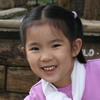æ‘„å½±çš„å‡ ä¸ªå°tips
With most shooting I start at f/4, and then consider what I want to tradeoff with aperture. If I want less DoF, I’ll open up and then see how much sharpness/vignetting/CA I want to trade for a thinner DoF. Shooting wide open by default is not a great habit, simply because your lens is not at its best there.
With landscape shooting, I tend to start at f/8, and then consider what I want to tradeoff with the aperture in terms of diffraction vs. DoF. And if I’m shooting landscape, I bring a tripod along, because sometimes I’m going to want a lot more depth of field, and I’m liable to shooting at full frame, where I’m going to need a smaller aperture for the DoF I want than I would with a crop body.
F8-F9, F7 - F11, > F11 start to have diffraction
I often shoot with moving subjects. I tend to sacrifice ISO to get the shutter speed I need.
Most of the time, you rely on the meter. The meter will tell you if your settings are sufficient for what you want to do. If they’re not, then you have to juggle the tradeoffs. With iso, the tradeoff is noise. With aperture, the tradeoff is DoF and lens performance, and diffraction. With shutter speed, the tradeoff is motion blur. It’s kinda that simple.
For landscapes aperture should be chosen for maximum sharpness unless a specific need dictates otherwise.
Waterfall Pictures www.newenglandwaterfalls.com/waterfallsp…
always to carry a tripod
Long shutter speeds are essential to create the soft “angel-hair†or “silky†look so common to waterfall photographs. Generally, speeds of 1/15 second or longer will blur the water to create this artistic effect. (1/15-1/6s) - may go up-to 2 digits second You will find that long shutter speeds work much better for thin plunges or other weak-powered waterfalls.
With the traditional block-type waterfall, we suggest using shorter shutter speeds, such as 1/60 second, because longer shutter speeds on such falls often create a portrait of pure white water that lacks detail.
A small aperture is needed if you want to capture an entire waterfall landscape, including the wildflowers, trees, rocks, and any people around the falling water. We suggest experimenting with apertures between f/6.3 and f/13. Apertures of f/11 or f/13, for example, should capture everything in focus for most shots
a circular polarizer filter can be very useful in extending the shutter speed to your desired level. These filters generally provide you with between one and a half to two stops of extra light. reduce the glare that is reflected off water and wet rocks
Bracketing is a waterfall photographer’s best friend. Very often, the correct exposure can be a full two stops away from the suggested exposure from your camera’s meter.
Europe Pictures
Get close. Notice details. Get closer, real close.
People are the most interesting subjects. Buildings, in general, are not interesting. As travel photographers gain experience, they take more people shots and fewer buildings or general landscapes.
Maximize good lighting. Real photographers get single-minded at the magic hours — early morning and late afternoon
Bracket shots when the lighting is tricky.
在光线对比强烈的场景,暗化周围纷乱场景而强化主体光线,整幅照片是暗调的,å¯ä»¥å°è¯•ã€‚- zhongdiren 欧洲行。å¯æƒœå•çº¯æ™¯ç‰©ç…§ï¼Œé£Žæ ¼è¿‡äºŽå•è°ƒã€‚
6 Tips for Photographing the Churches of Europe
These great churches are infamously dark High ISO Slow shutter Open wide your aperture F2.8 -F4
Find the Light - The large, open windows will be your first choice of location for shot creation. Find this light and create an image using it’s contrast.
How can you give perspective to a wide open area? Use angles.
Maybe use HDR?
Leave a Reply
You must be logged in to post a comment.

